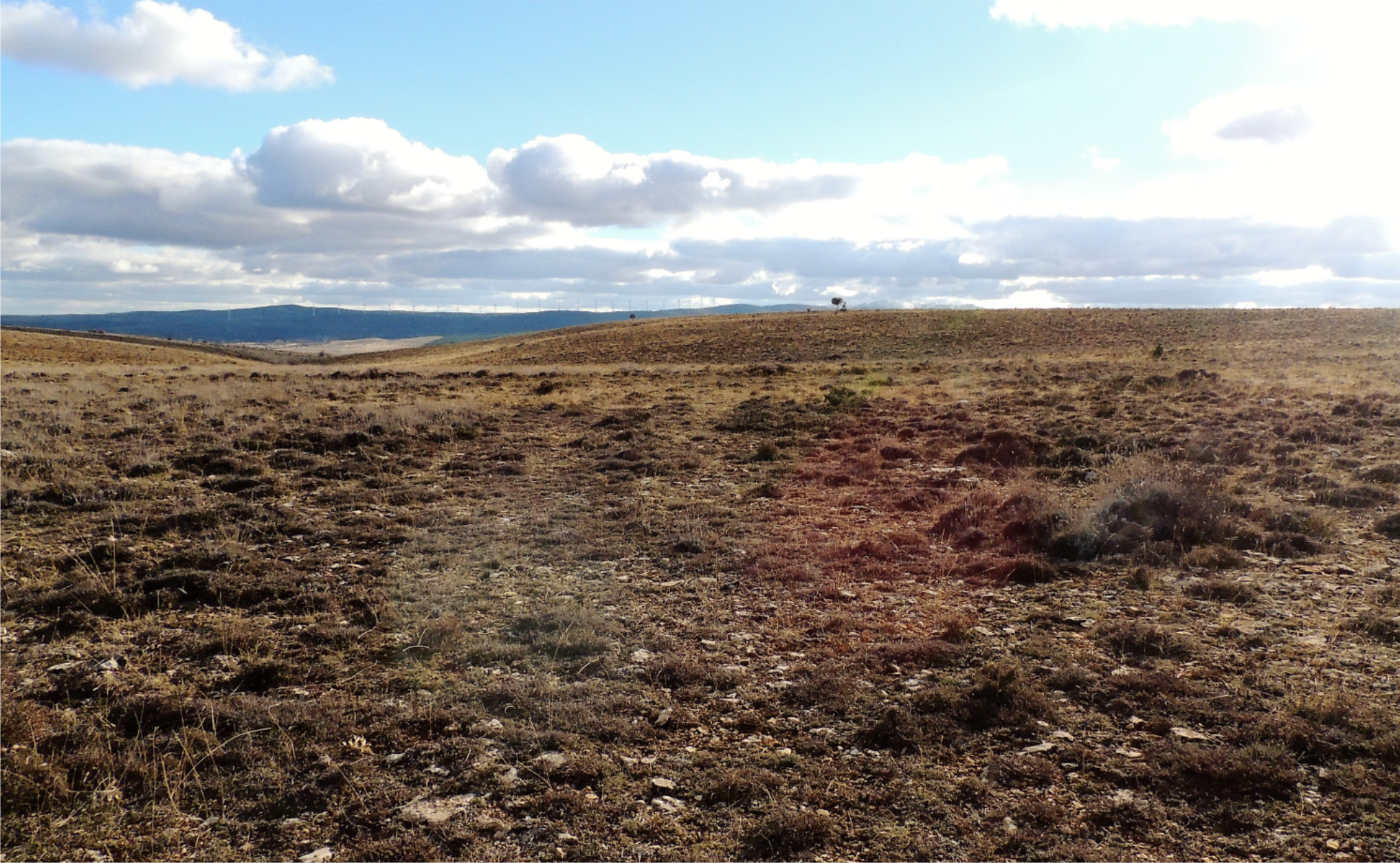Habitat quality: critical factor to explain the abundance of Dupont´s lark.
During 2017, the LIFE-Ricotí project has carried out an evaluation of the relative importance of different environmental factors related to habitat quality in explaining the presence and abundance of Dupont´s lark. This work has been carried out at two spatial scales: habitat patch (macroscale) and microhabitat (structural characteristics of vegetation, and food availability), in “Altos de Barahona” and “Páramo de Layna” Special Protection Areas (SPAs), Soria, both being study areas of the LIFE Ricotí project. The determination of these factors should be a critical step to develop, in an optimal way, habitat management strategies in the coming years of the project. This is aimed at increasing habitat availability for the species, one of the most threatened birds in Spain and Europe.
Despite only winter and spring 2017 data have been analysed to date, preliminary results indicate that vegetation structure (coverage, vertical complexity, etc.) emerge as a critical factor, as it shows clear differences between habitat types. Besides natural differences among plant communities, we have detected high microscale scale similarity between different localities used by the species, both in terms of floristic composition and vegetation structure, which can be very useful for the future management of Dupont´s lark habitat. Interestingly, differences in food availability have also been found between habitats and periods, being coprophages one the most important group during the winter period and epigean arthropods during the reproductive period in explaining lark presence and abundance.
A critical factor for explaining differences in vegetation structure and composition, and food availability, could be the variability in livestock stocking density among habitats. In a global context where the stocking density is drastically declining, extensive grazing could be a main driver for the maintenance of Dupont´s lark, given the apparent relationship between livestock, arthropod abundance and the presence of the species. In fact, our results suggest that differences in stocking density between habitats may be influencing vegetation structure and the presence of coprophagous arthropods, i. e. habitat and food for Dupont´s lark.
In summary, it can be concluded that factors explaining the presence and abundance of Dupont´s lark in the study area habitat type, herbivorous presence and the biomass of epigeous arthropods. This result suggests that a scrub habitat, where livestock shape structure and height of vegetation and contribute to increased food availability in the form of arthropods, would be defining the optimal habitat for Dupont´s lark.
The research team of the LIFE Ricotí project will continue monitoring habitat quality during the years of the project. In addition, success of the habitat restoration works planned for 2018 will be evaluated to determine whether the optimum habitat quality to be used by the Dupont´s lark is been achieving. The LIFE Ricotí project is thus making progress in its objectives of improving the worrying conservation status of the Dupont´s lark populations in Soria.
Adrián Barrero Diego and TEG Ricotí UAM team
Copyright © 2020 - Aviso Legal | Acceso | Desarrollado por Cesefor





